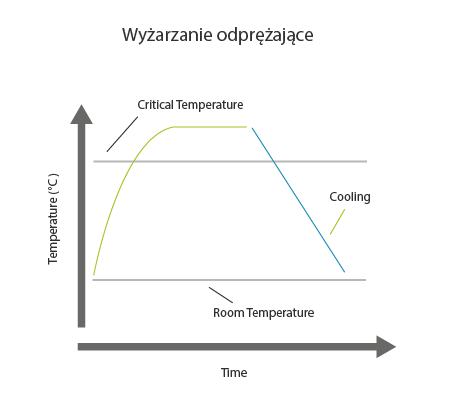Stress relief annealing reduces residual stresses from manufacturing processes without changing the structure or properties of the material. This is done by heating the metal to a certain temperature and then cooling it in a controlled manner. This helps to remove any internal stresses caused by quenching or other manufacturing methods, thus avoiding potential future problems.

Stress relief annealing
Type of technology
Development phase
Level of innovation
Scale of production
mass
Technology readiness level TRL
Description of the technology
Purpose of use
reducing the internal stresses generated by the production process
Industry usage
reduction of internal stresses generated in manufacturing processes such as welding, cold forging, mechanical cutting, quenching
Alternative technologies
- none
Visualisation of action
Advantages
- reduction of internal stresses after manufacturing processes
- change in mechanical properties
- restoration of the material to its original state
Disadvantages
- requires precise temperature control
- long annealing time
Workpiece material types
- steel
Examples of products
- steel structures
- pipes
- tanks
- shafts
- gears
- sleeves
- lathe knives
Implementation of the technology
Required resources
- heating furnace
Required competences
- on-the-job training
Environmental aspects
Expert evaluation
Development centers
- AGH University of Krakow
- Institute of Metallurgy and Materials Science of Polish Academy of Sciences
- Warsaw University of Technology
- Cracow University of Technology
- Łukasiewicz – Upper Silesian Institute of Technology
- Czestochowa University of Technology
Legal conditions
- none
